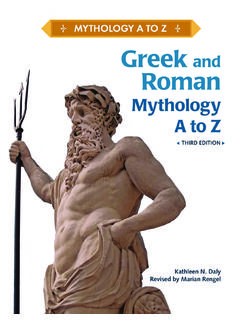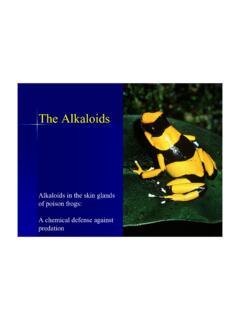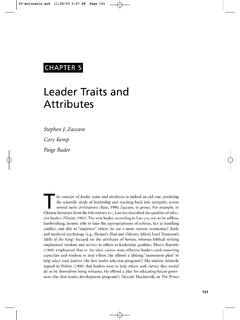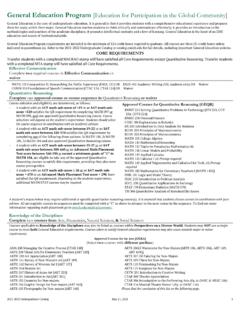Transcription of A DICTIONARY OF SYMBOLS - AIDS-3D
1 A DICTIONARY OF SYMBOLSS econd EditionbyJ. E. CIRLOTT ranslated from the Spanish byJACK SAGEF oreword by Herbert ReadLONDONADICTIONARYOF SYMBOLST ranslated from the SpanishDICCIONARIO DE SIMBOLOS TRADICIONALESThis edition published in the Taylor & Francis e-Library, translation Routledge & Kegan Paul Ltd 1962 Second edition 1971 All rights reserved. No part of this book may be reprinted or reproduced orutilized in any form or by any electronic, mechanical, or other means, now knownor hereafter invented, including photocopying and recording, or in anyinformation storage or retrieval system, without permission in writing from Library Cataloguing in Publication Data 0 415 03649 6 (Print Edition)ISBN 0-203-13375-7 Master e-book ISBNISBN 0-203-18928-0 (Glassbook Format)
2 CONTENTSFOREWORD page ixINTRODUCTIONxiDICTIONARY 1 BIBLIOGRAPHYOF PRINCIPAL SOURCES3 8 7 ADDITIONAL BIBLIOGRAPHY389 INDEX401 PLATESB etween pages 104 and 105I. Roman sculpture incorporating symbolic motifsII. Modesto Cuixart. Painting, 1958 III. Portal of the church of San Pablo del Campo, BarcelonaIV. Silver chalice, from Ardagh, Co. LongfordV. Tenth-century monument at ClonmacnoisVI. chinese version of the cosmic dragonVII. A renaissance relief, from the Doge s Palace at VeniceVIII. Capitals, monastery of Santo Domingo de SilosIX. Early Christian Symbol thirteenth-century gravestoneX.
3 Gothic fountain Casa del Arcediano, BarcelonaXI. Giorgione, The StormXII. Roman statue of the TwinsXIII. Gothic Miniature of The Apparition of the Holy GrailXIV. Bosch, Garden of DelightsXV. Portal of the Romanesque cathedral at Clonfert, Co. GalwayXVI. chinese symbol of heavenBetween pages 296 and 297 XVII. Archetypal image of the ArchangelXVIII. Celtic candelabra incorporating symbolic horse and solar wheelXIX. Antonio Tapies. A painting, 1958XX. Door to the sanctuary of the church of San Pl cido, MadridXXI. Libra and other signs of the ZodiacXXII.
4 Gothic miniature of ship and whaleXXIII. Bird-woman relief in Barcelona cathedralXXIV. Roman painting of twin-tailed sirenXXV. Greek sphinx, fifth century Jacob s dream (after an old engraving)XXVII. Heraldic supporters College of San Gregorio, ValladolidXXVIII. Tetramorph. Romanesque paintingPLATES viiiXXIX. Roman composition of Adam and EveXXX. The sixth sign of the ZodiacXXXI. Detail of a painting by Pedro Berruguete, c. 1500 XXXII. Circular representation of the signs of the ZodiacFOREWORDIN THE INTRODUCTION to this volume Se or Cirlot shows his wide andlearned conception of the subject-matter of this DICTIONARY , and the only task leftto me is to present the author himself, who has been familiar to me for some yearsas the leading protagonist of a very vital group of painters and poets in Eduardo Cirlot was born in Barcelona in 1916, and after matriculating fromthe College of the Jesuits there, studied music.
5 From 1943 onwards he was activeas a poet, and published four volumes of verse between 1946 and 1953. Meanwhilethe group of painters and poets already mentioned had been fo rmed (Dau al Set),and Cirlot became its leading theoretician. For historical or political reasons,Spain had been slow to develop a contemporary movement in the arts comparableto those in other European countries; its greatest artists, Picasso and Mir , hadidentified themselves with the School of Paris. But now a vigorous and independent School of Barcelona was to emerge, with Antonio Tapies and Modesto Cuixartas its outstanding representatives.
6 In a series of books and brochures Cirlot notonly presented the individual artists of this group, but also instructed the Spanishpublic in the history and theoretical foundations of the modern movement as the course of this critical activity Se or Cirlot inevitably became aware ofthe symbolist ethos of modern art. A symbolic element is present in all art, in sofar as art is subject to psychological interpretation. But in so far as art has evolvedin our time away from the representation of an objective reality towards theexpression of subjective states of feeling, to that extent it has become a whollysymbolic art, and it was perhaps the necessity for a clarification of this functionin art which led Se or Cirlot to his profound study of symbolism in all result is a volume which can either be used as a work of reference, orsimply read for pleasure and instruction.
7 There are many entries in this DICTIONARY those on Architecture, Colour, Cross, Graphics, Mandala, Numbers, Serpent,Water, Zodiac, to give a few examples which can be read as independent in general the greatest use of the volume will be for the elucidation of thosemany SYMBOLS which we encounter in the arts and in the history of ideas. Man,it has been said, is a symbolizing animal; it is evident that at no stage in thedevelopment of civilization has man been able to dispense with SYMBOLS . Scienceand technology have not freed man from his dependence on SYMBOLS : indeed, itmight be argued that they have increased his need for them.
8 In any case, symbologyitself is now a science, and this volume is a necessary instrument in its READD elimitation of the Symbolic On entering the realms of symbolism, whether byway of systematized artistic forms or the living, dynamic forms of dreams andvisions, we have constantly kept in mind the essential need to mark out the fieldof symbolic action, in order to prevent confusion between phenomena whichmight appear to be identical when they are merely similar or externally temptation to over-substantiate an argument is one which is difficult toresist.
9 It is necessary to be on one s guard against this danger, even if full compli-ance with the ideals of scholarship is not always feasible; for we believe withMarius Schneider that there is no such thing as ideas or beliefs , only ideas andbeliefs , that is to say that in the one there is always at least something of theother quite apart from the fact that, as far as symbolism is concerned, otherphenomena of a spiritual kind play an important a critic such as Caro Baroja (10) declares himself against any symbolicinterpretation of myth, he doubtless has his reasons for so doing, although onereason may be that nothing approaching a complete evaluation of symbolism hasyet appeared.
10 He says: When they seek to convince us that Mars is the symbolof War, and Hercules of Strength, we can roundly refute them. All this may oncehave been true for rhetoricians, for idealist philosophers or for a group of more orless pedantic graeculi. But, for those who really believed in ancient deities andheroes, Mars had an objective reality, even if this reality was quite different fromthat which we are groping for today. Symbolism occurs when natural religions aredegenerating. In point of fact, the mere equation of Mars with War and of Her-cules with Labour has never been characteristic of the symbolist ethos, whichalways eschews the categorical and restrictive.





